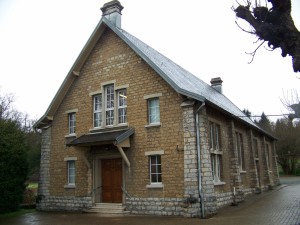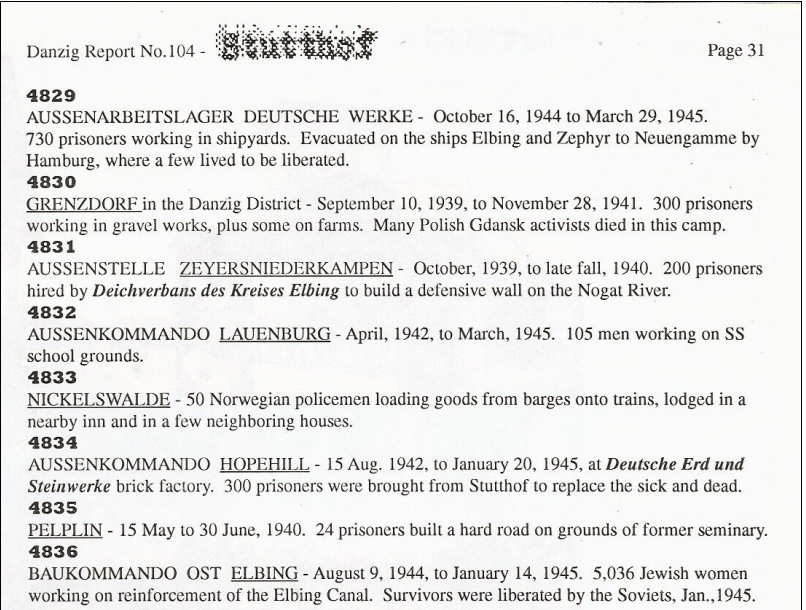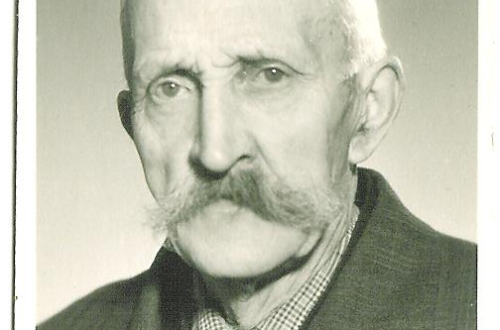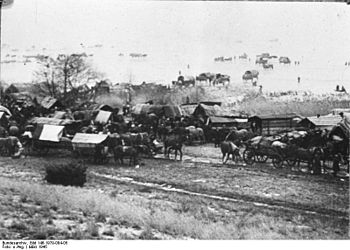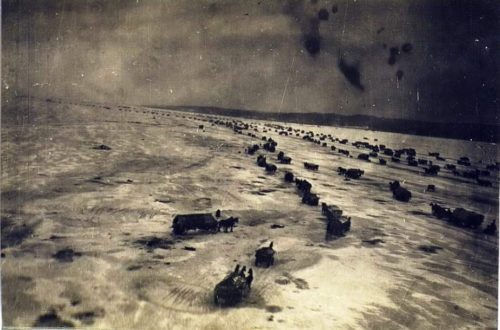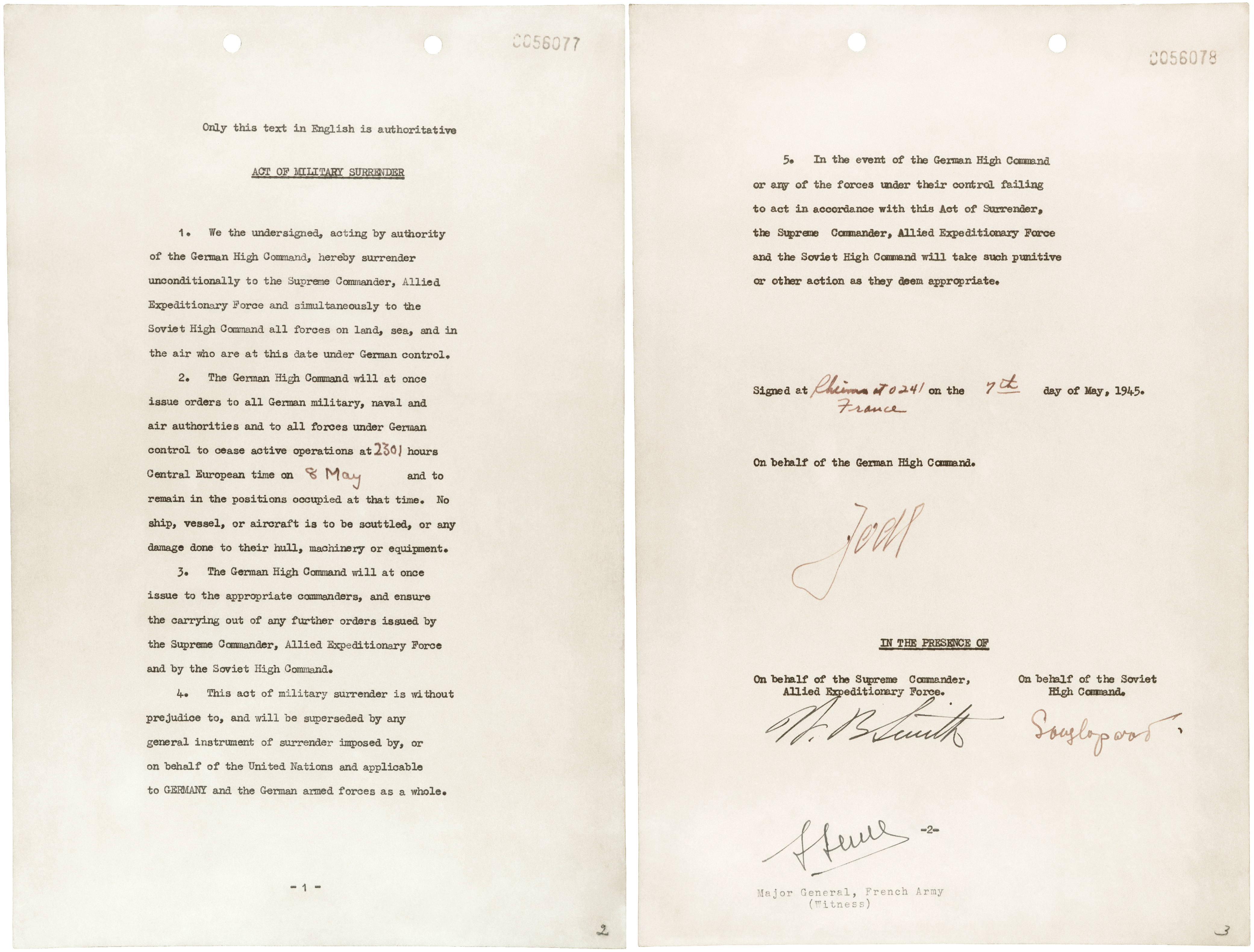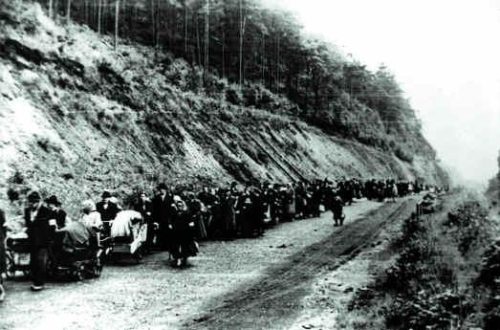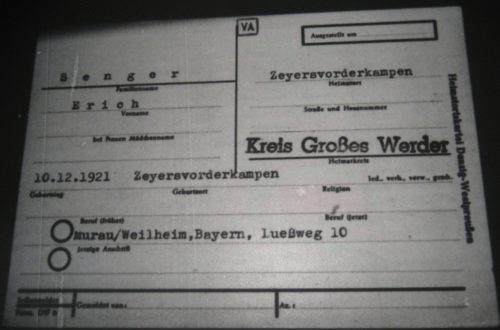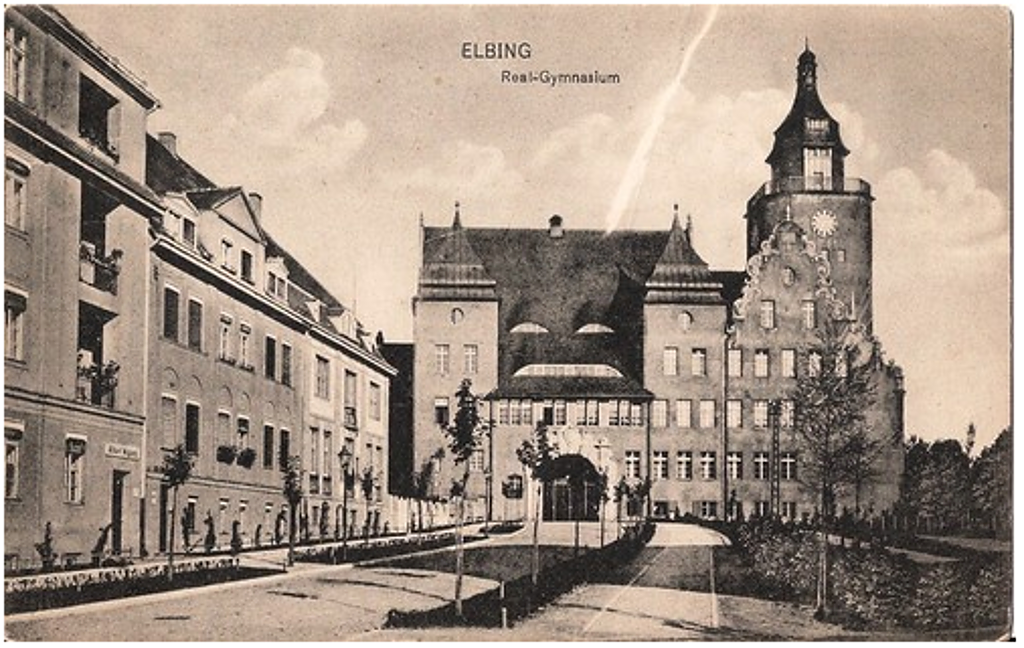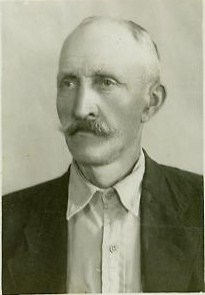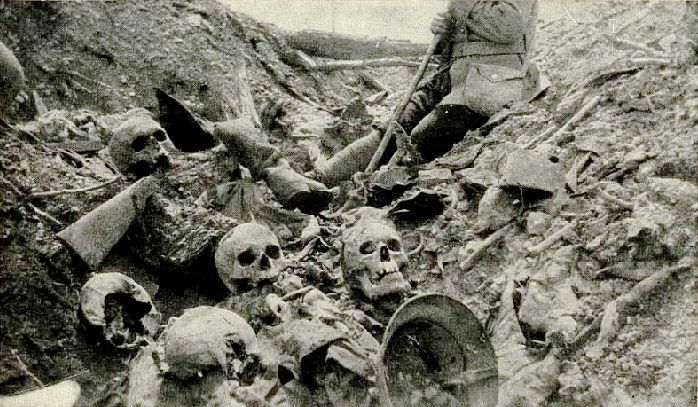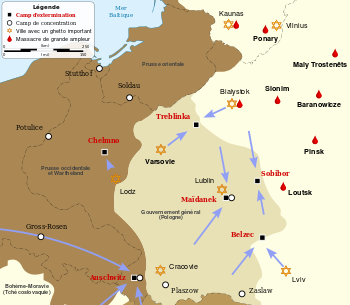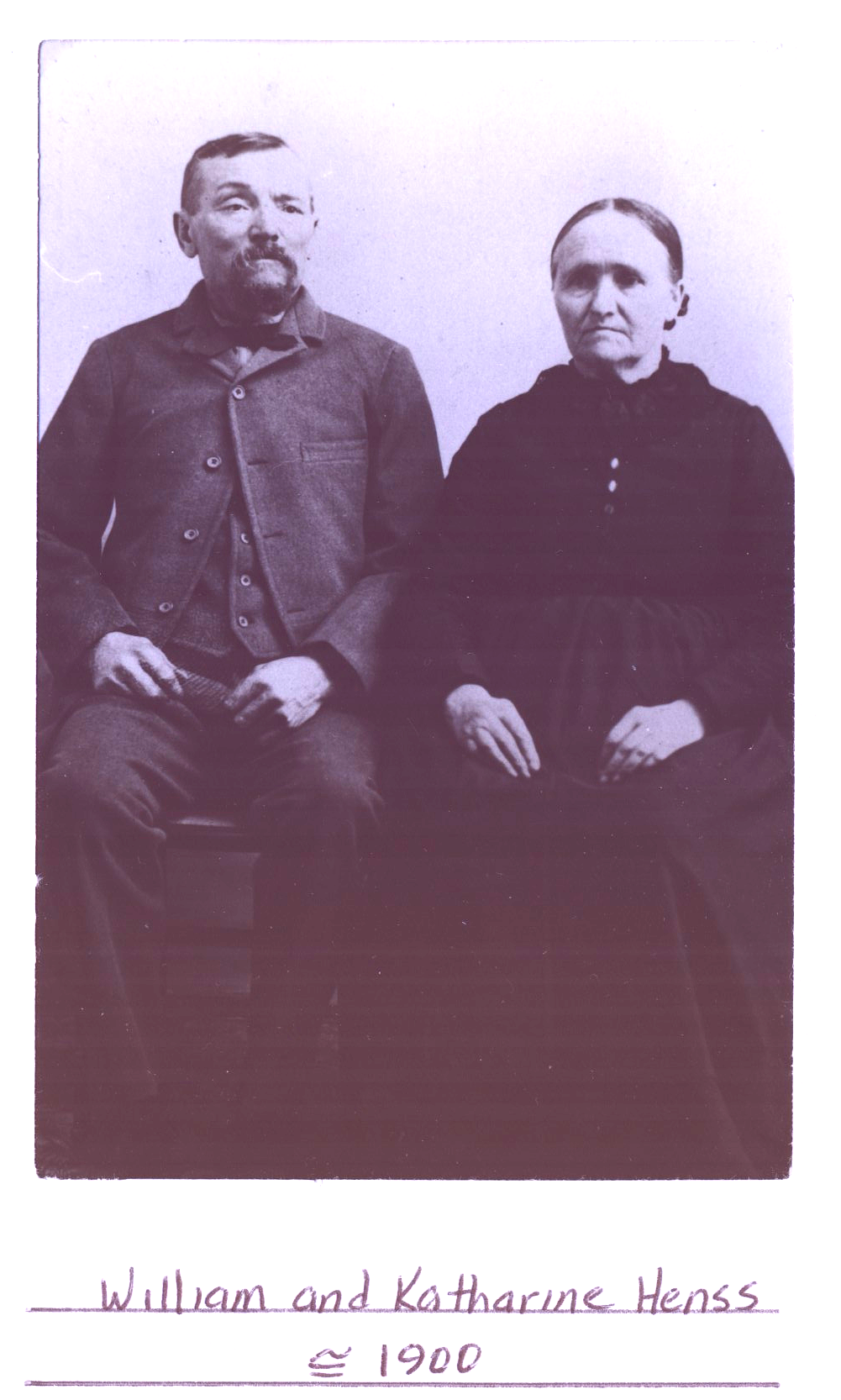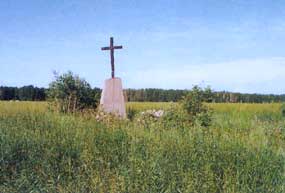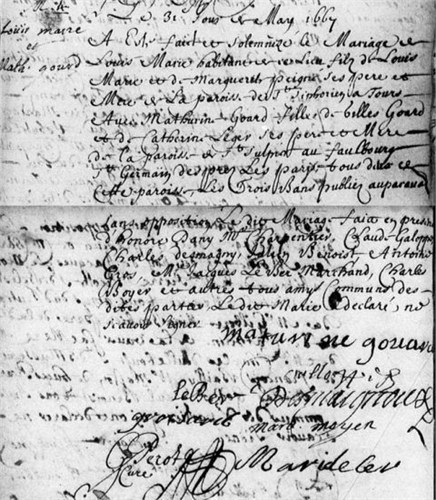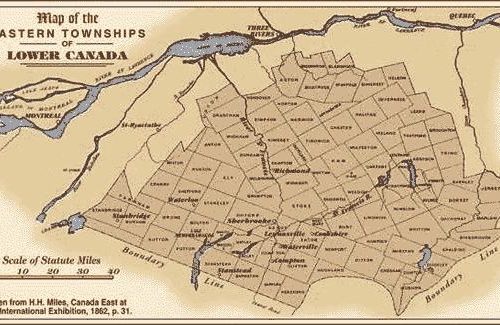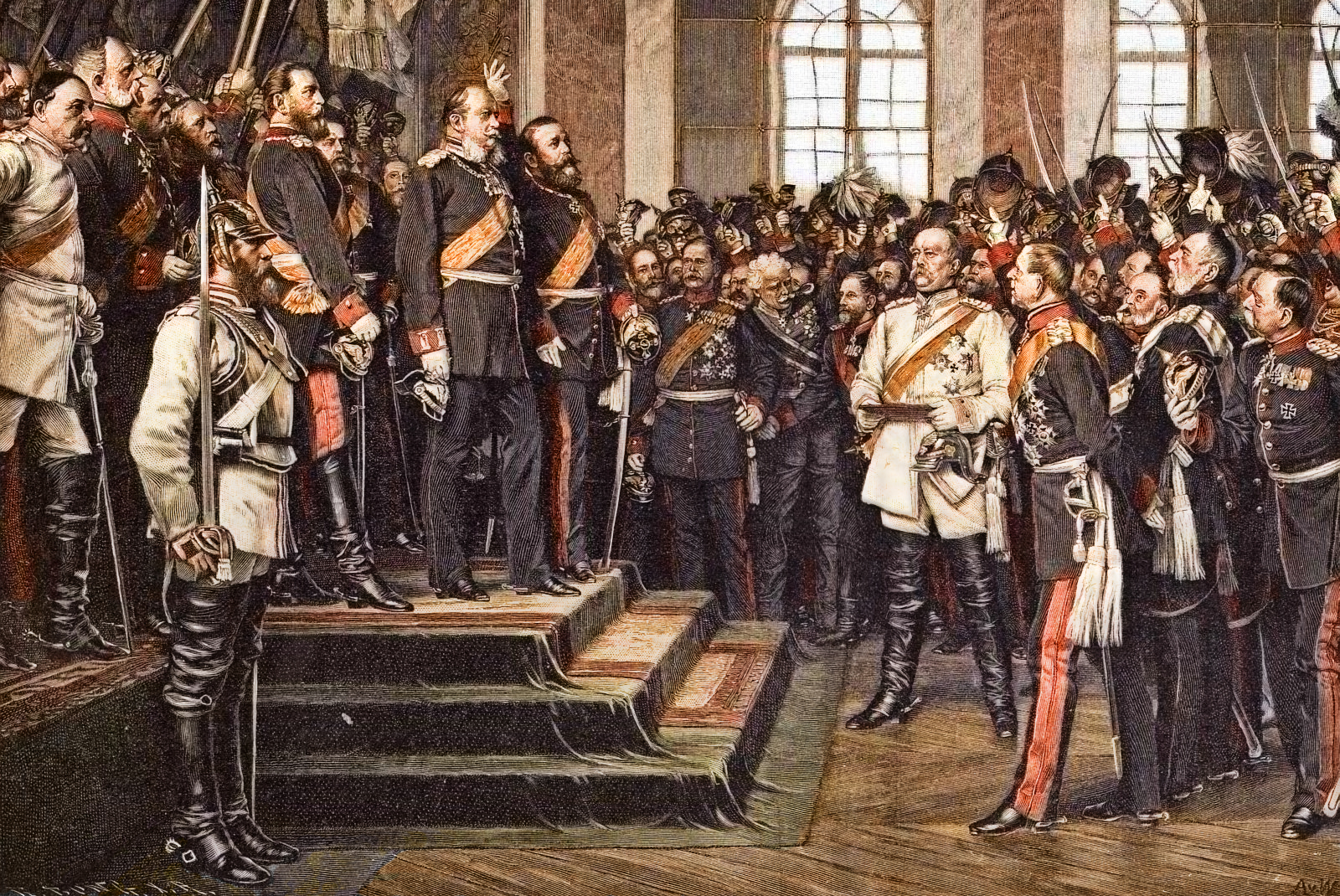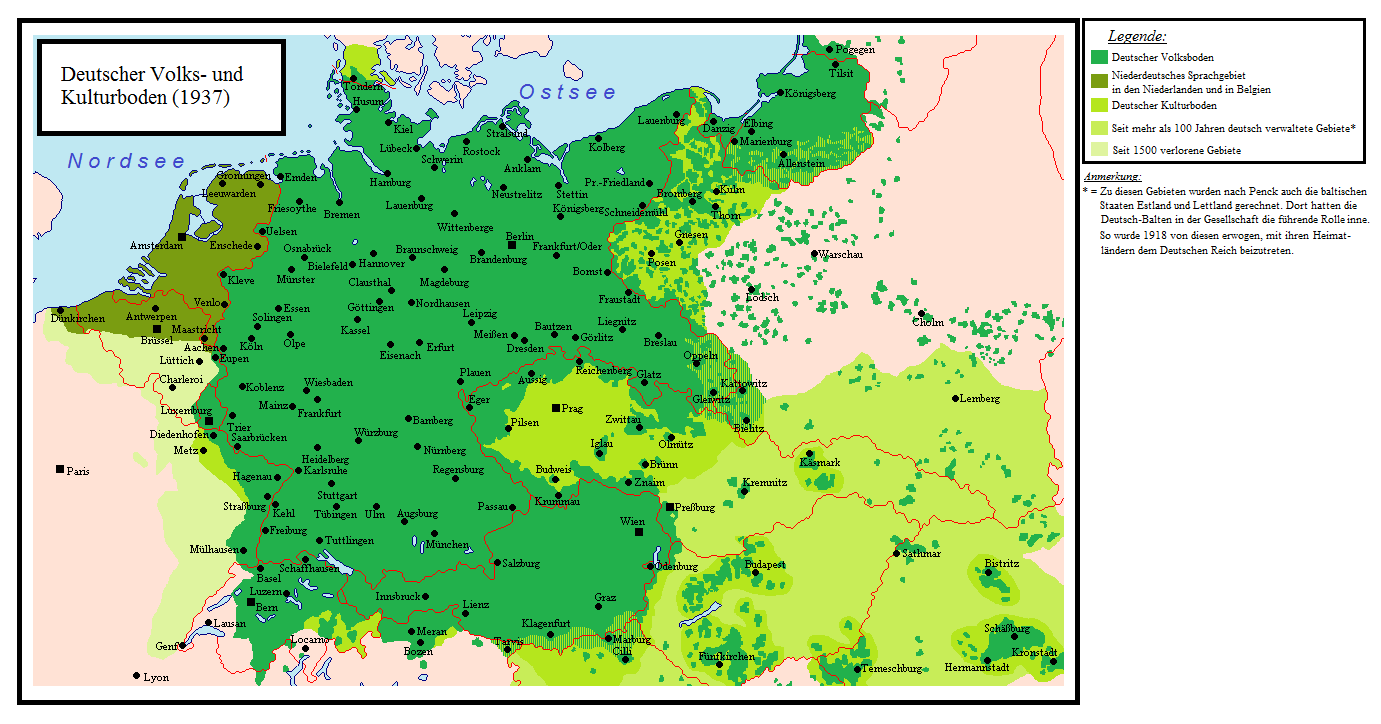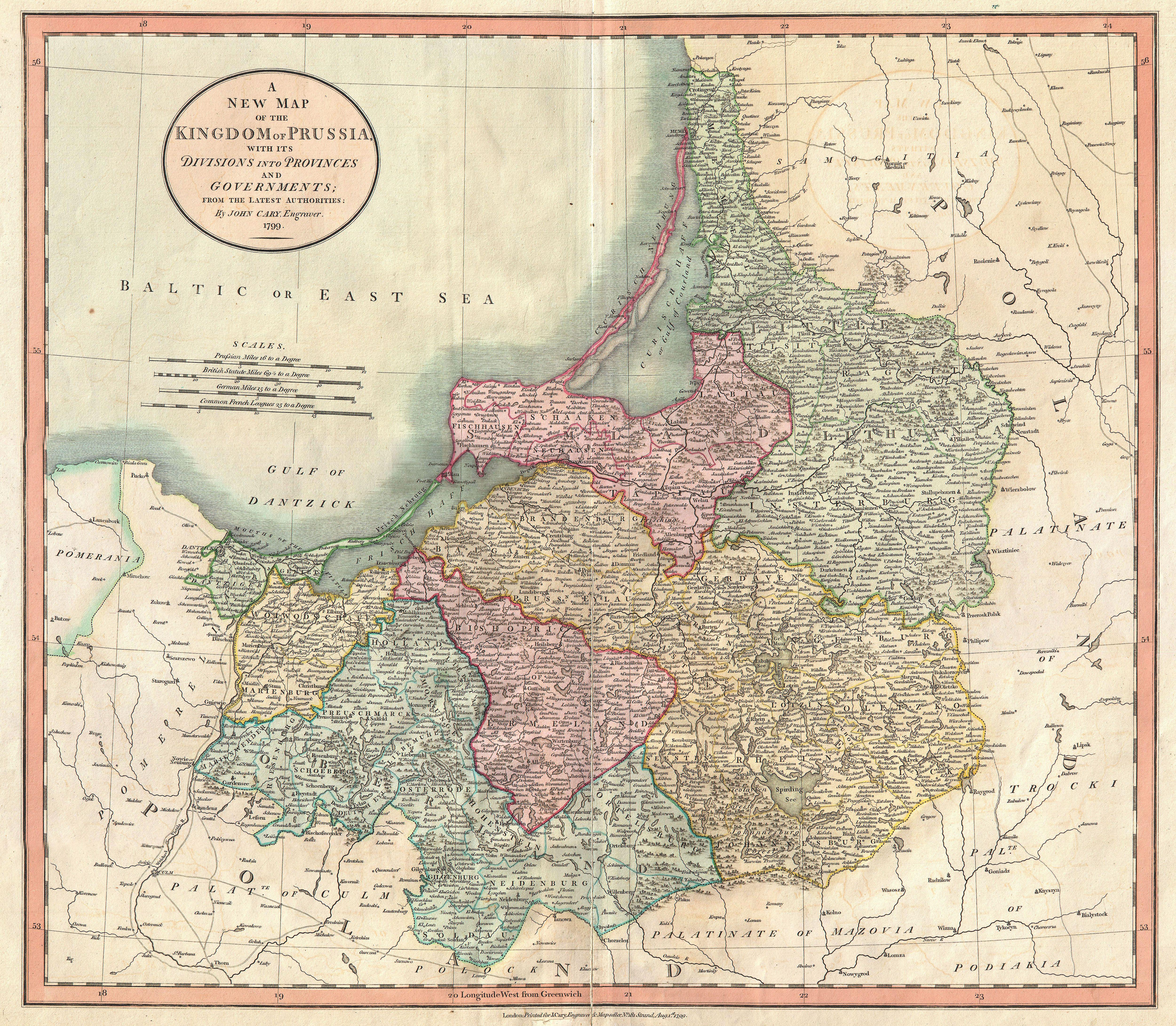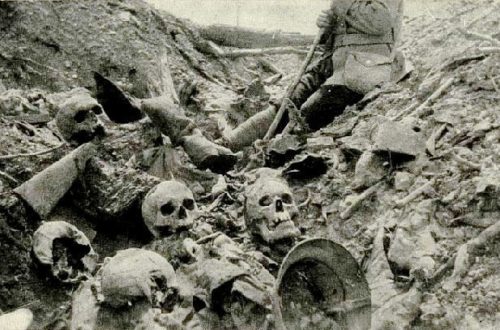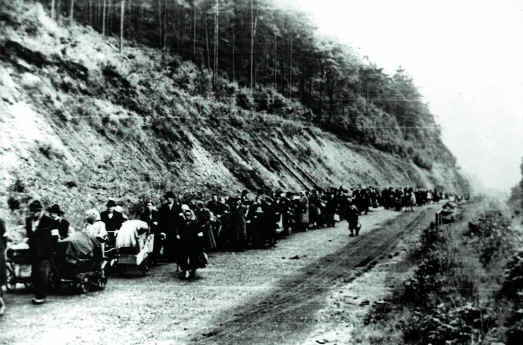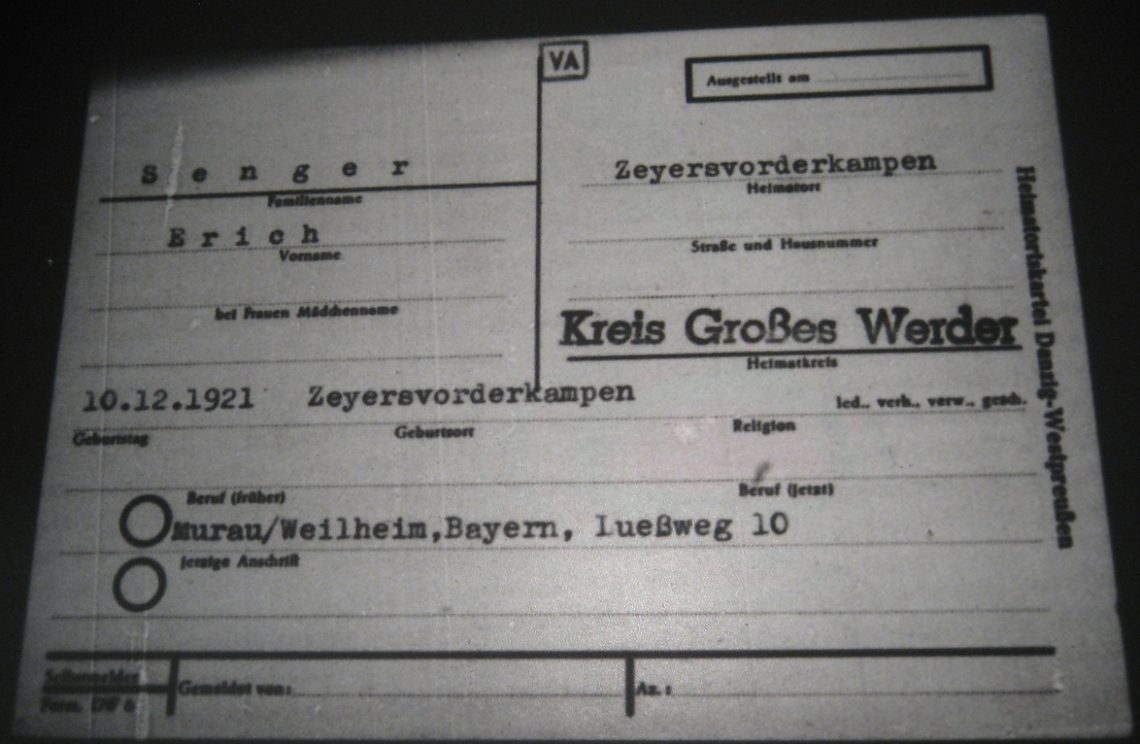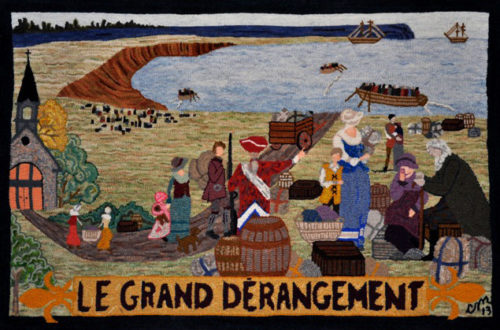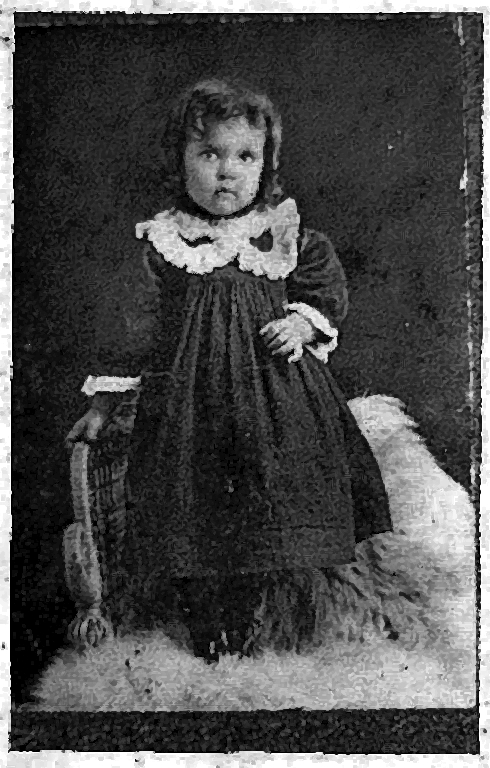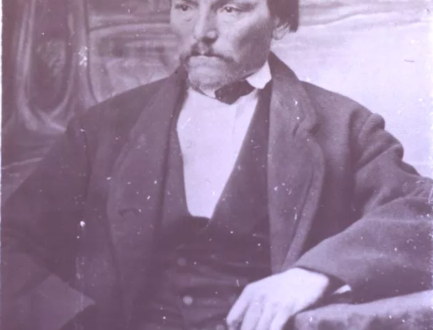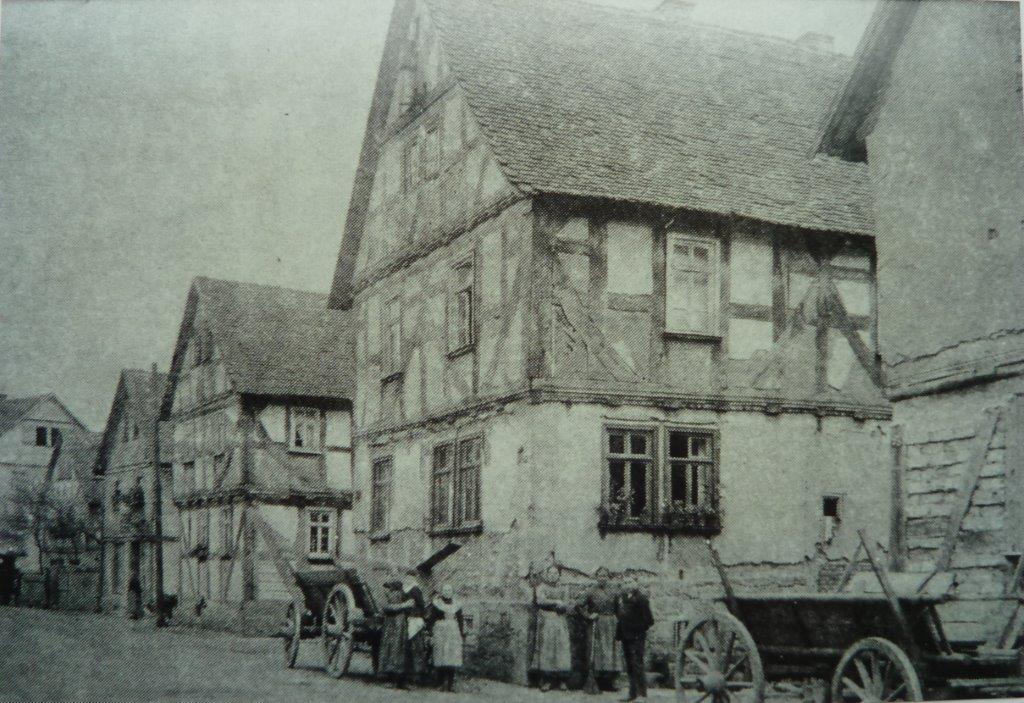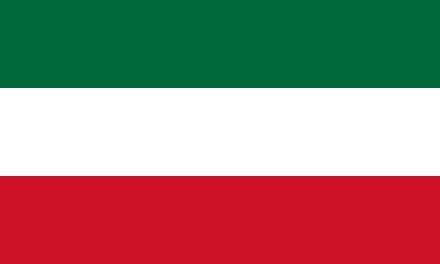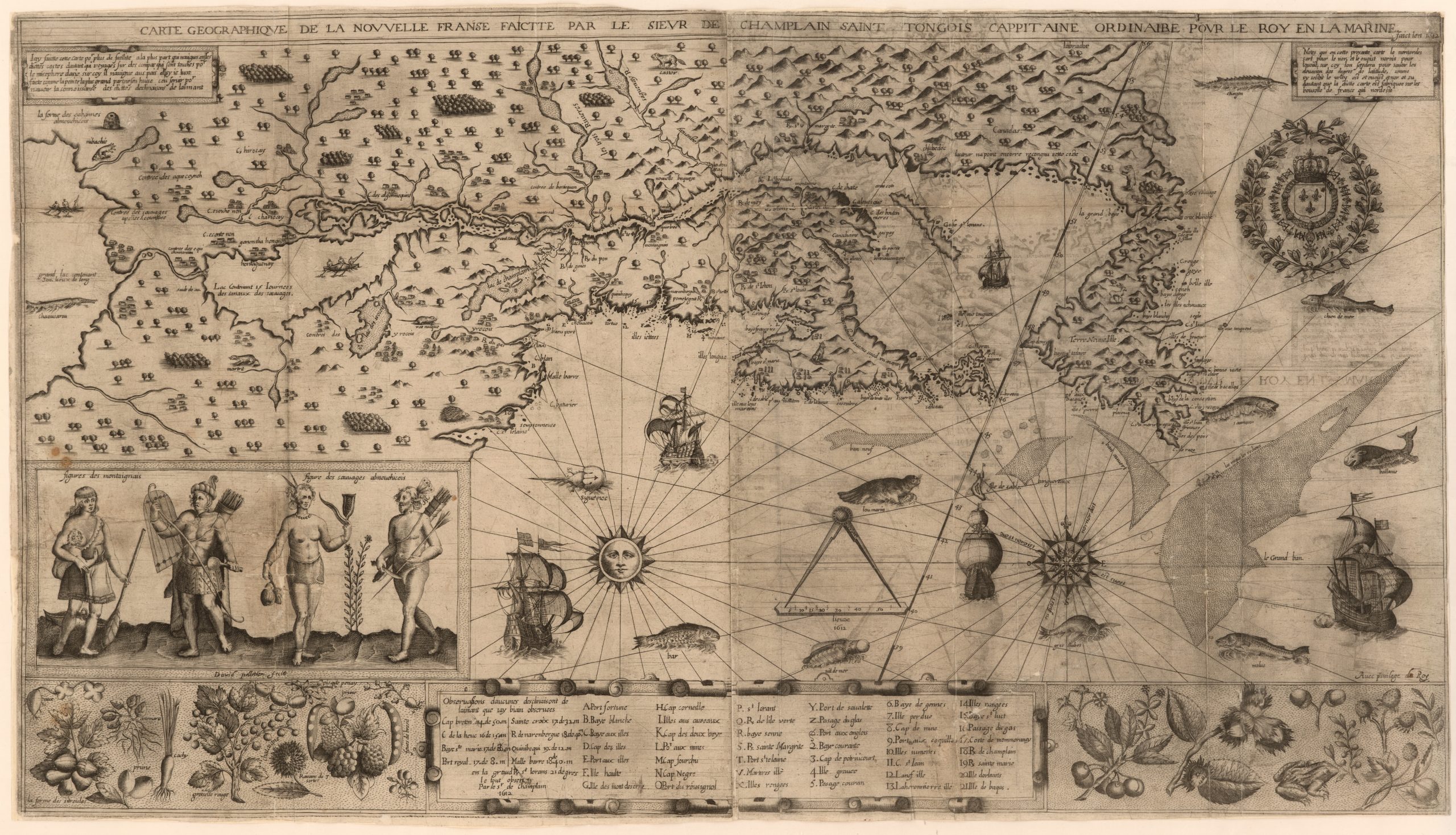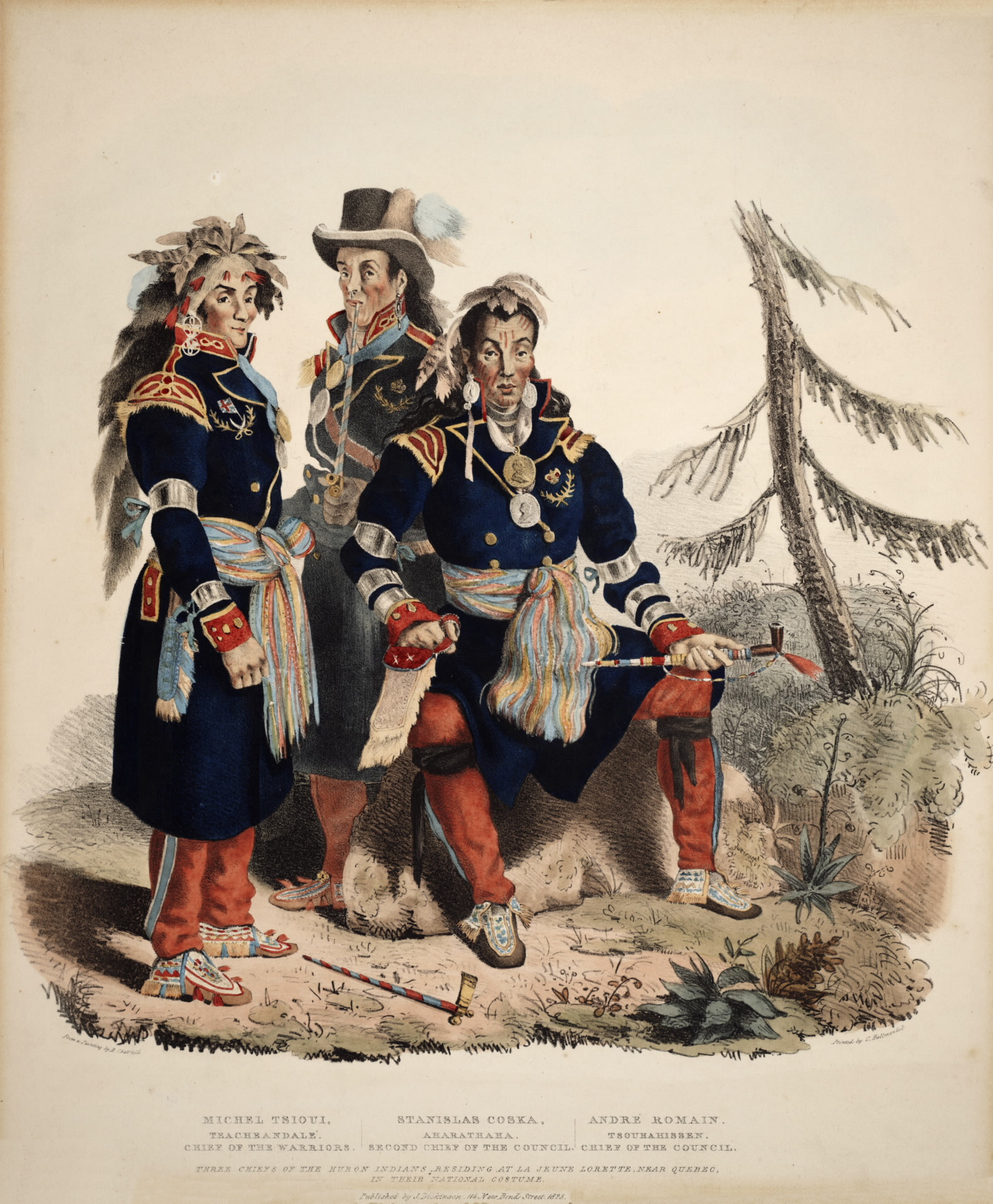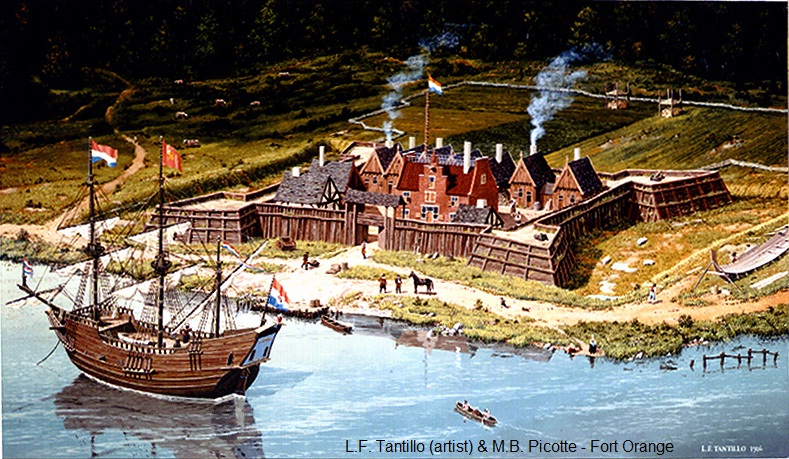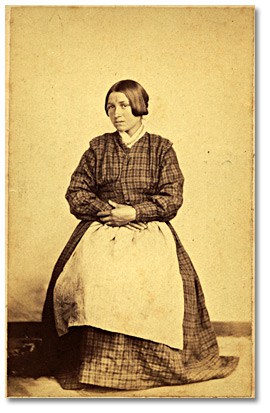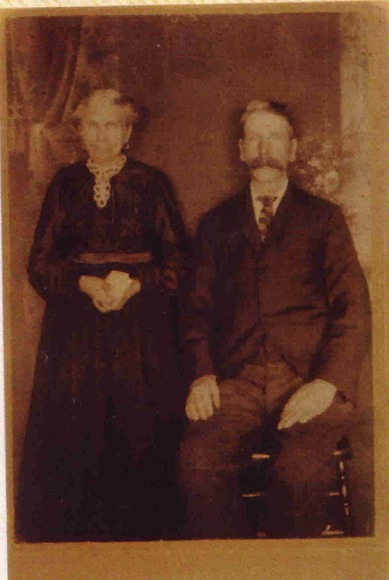Histories
-
Prussian Mennonite Research Materials
As many of you may know, my Recht family line (Hermann Recht’s family) has strong roots within what was once the Mennonite Community resident near the former Elbing and Marienburg, Westpreussen. As I conduct my Prussian Mennonite family genealogical research, this page will evolve and develop into something a bit more robust. I am using Mendeley to gather and manage my research findings and source materials (I am also using the tool in an effort to evaluate its effectiveness for genealogy work.) If I end up writing something profound, perhaps Mendeley will also manage my writings. In any event for those interested in viewing and accessing most of my source…
-
Hinaus in die Ferne
It probably bears mention that my grandmother- Frieda Senger- was a woman of many verses. So given that my most recent visits with my mother have involved hearing a particular verse frequently; I thought I’d preserve it for posterity, especially since it is a verse I never heard while growing up. It’s a lively little item… Hinaus in die Ferne Mit Butterbrot und Speck. Das mag ich ja so gerne, Das nimmt mir keiner weg. Und wer das tut, Dem hau’ ich auf die Nase, Dem hau’ ich auf die Schnut’, Daß es [ihm] blut’. It turns out to be a music composition with lyrics and so it has an…
-
Heimatortskartei gets personal
Almost all ManyRoads readers know that my mother’s family was among those expelled by the allies from the the former German Eastern province of West Prussia following World War 2. Today, I had the great honor to read and view the Heimatortskartei records of my relatives and their friends/ neighbors. I have placed the images I found on line and will update this image library as I find more documents. For those interested, here are the images I managed to obtain.
-
West Prussia (near Zeyer) Mennonite Births, Deaths, Marriages
The links on this page have been sourced from the Prussian Mennonite Genealogy Resources site. I have rearranged the original links and grouped them for my convenience. Please note, these materials are used without permission because there was no copyright notice or location from which to request usage permission. All ownership and rights of this material belongs to its original author(s). If you wish to use the most current information and links on these topics and more, I encourage you to visit the original site. Any research queries should be directed to one of the Mennonite archives in Canada or the U.S. Elbing-Ellerwald Elbing and Ellerwald Mennonite Church Record Books:…
-
Mennonite Histories of West Prussia
The links on this page have been sourced from the Prussian Mennonite Genealogy Resources site. I have rearranged the original links and grouped them for my convenience. Please note, these materials are used without permission because there was no copyright notice or location from which to request usage permission. All ownership and rights of this material belongs to its original author(s). If you wish to use the most current information and links on these topics and more, I encourage you to visit the original site. Any research queries should be directed to one of the Mennonite archives in Canada or the U.S. Danzig District The 1661 Census of Mennonites in…
-
Danzig- Westpreussen (West Prussia) Heimatortskartei
For those wishing to gain access to photographic images of the actual Heimatortskartei from the towns, cities & villages which were near what used to be Danzig in West Prussia, they are available on FamilySearch. (LINK to Danziger Gebiet (Area ) Westpreussen (West Prussia) Heimatortskartei). These represent images of a civil register (handwritten and printed works) of refugees from the former province of Danzig-Westpreußen, Germany, now Gdańsk and Bydgoszcz provinces in Poland. For those of us whose families were expelled from their homes by the allies after World War 2, this represents a set of documentation that could contain the handwriting of ‘our’ family members, from that place and time.…
-
German Expulsions & the Diaspora
While doing some research for an email response, I came across a body of work related to Die Vertreibung (The Expulsion). These papers are presented on the website of Dr. Stefan Wolff. Stefan Wolff is Professor of International Security at the University of Birmingham, England, UK. A political scientist by background, he specialises in the management of contemporary international security challenges, especially in the prevention, management and settlement of ethnic conflicts and in post-conflict stabilisation and state-building in deeply divided and war-torn societies. Stefan Wolff, “Stefan Wolff,” political research, academic, Stefan Wolff, n.d., http://www.stefanwolff.com/. Ethnic Germans in Poland and the Czech Republic: A Comparative Evaluation Co-authored with Karl Cordell and…
-
WW1 German Casualty Lists – 1.WK Armee-Verordnungsblatt Verlustliste
Since I originally wrote this article, a number of new source material sites have come online. Be advised the only records listed here are those for German War Dead or Wounded. In the event that you are unaware of key statistics involving German troops in WW1 here is a rough sketch: Killed in Action: 1.7 to 2 million Wounded: 4.2 million 65% of all mobilized men were casualties (killed or wounded) A word of caution, Austrian or other German Central Power Aligned Troops are listed elsewhere, as are those of the Allied Powers. As of 8 Feb. 2015, you may find WW1 German Casualty Lists online at (but be aware…
-
Worse than War
In keeping with our emphasis on die Vertreibung and Ethnic Cleansing, we recommend you either view Daniel Jonah Goldhagen’s documentary “Worse Than War” or read his book of the same title. To quote Dr. Goldhagen: (source website- disappeared) I hope that you choose to have a look at it. Whether or not you end up agreeing with every conclusion and proposal in Worse Than War, the [documentary] offers a plethora of new information and perspectives not just on genocide or eliminationism but on critical aspects of humanity and modernity, society and politics. I hope to rouse your intellect and conscience, even if I at the same time challenge your views…
-
“Dit” Names
The use of Dit names in French Canada (Bas Canada) is both very common and confusing. Currently, I am working with another Deyo cousin to attempt to unravel yet another Deyo mystery. This part of my family line is now being reworked for the fourth time! I think I might be getting good at it. Briefly here’s the mystery… It appears, now, that I might be descended from a woman we believe was named Honoree Beaulac. Her family name (surname) has the following common dit names (there may be others as well): Desmarais Lake Lefebvre Marest Beaulaque Hertel (a nice German sounding name, eh?) By the way you will also…
-
Rituel du Diocèse de Quebec
If you are performing research in Quebec, the Rituel du Diocèse de Quebec may prove useful in providing clues regarding the name or names of your ancestors. To quote the PRDH: Among Catholics, choice of first name wasn’t left to chance or parents’ imagination. On the contrary, the church liked to control the attribution of first names to ensure that on the day they were baptised, children received the name of a saint who would guide them throughout their life. In the Rituel du Diocèse de Quebec, which laid out the rules to follow for writing baptismal, marriage, and burial certificates in Quebec, Monsignor de Saint-Vallier stipulated, “The Church forbids…
-
Flucht aus Polen
They said, the war was over. Still, the suffering continued. They were hungry. Alone. Afraid. Father had never come home, from Stalingrad. Brother, an infant, was dead. Home was gone, given to others. Of the family, Mother and the two sisters survived. They had their fear, their lives, their uncertainty, and each other. Mutti had sent Lilli to beg a cup of food from another expelled family… (photo, Lilli, age six or seven, is in the dark coat with cup). Her face shows the the feelings of humiliation she still remembers. This poorly written piece is true. Circumstances such as Lilli’s Vertreibung can never be justified; yet, they continue. Different…
-
Frieda Senger- Cyrillic Conversion
As many of you are aware, I have been trying to decipher a Russian document that Soviets created as justification for sending my grandmother into a Gulag following WW2. To help me with my sleuthing, I have found and used the following tools: Russian letters & script Russian online keyboard Automatic Cyrillic Converter My grandmother’s document may be viewed here: Frieda Senger -Suchdienst & Soviet Records. What I did to help me in my search was to carefully look at the Cyrillic script and attempt to define each letter using the script as presented on the site at item 1 above. Once I found (or thought I found) the script…
-
Ostpreußen das Ende – East Prussia, the end
The assault on and destruction of East Prussia (1945).
-
Deutsche Mundarten- German Language
Deutsche Dialekten seit 1945 Deutsche Dialekten um 1910 revised: 14 Feb 2018 1 June 2021 The following library illustrates more of the German dialect and Language evolution (spread and contraction). The maps below also indicate where various German dialects were (are) spoken…
-
Papatschen Käserei (Meierei)
. revised: 22 Dec 2022 In Zeyervorderkampen during and before World War 2, there was a small Käserei (Meierei) Dairy that was owned, all or in part, by Richard Senger. Based upon maps and analysis of the region (today Kepiny Male) by Rainer Glodde-Mueller during his 2010 journey to the area, it is believed that the following photos are what remains of that past business. Obviously the buildings had been worked on in the early 1950s (see the photo with the dated stone near the roof peak). Discussions with Luise Senger Rabideau (Richard’s daughter) were not definitive in identifying these buildings positively. A mystery remains. Are these, or are they…
-
Deutsche Musik mit Humor (sampler #2)
The songs on this page are from the early 20th Century Germany (pre-World War 2) and have intriguing titles! I’ll add more insightful songs as I find them!
-
Sudeten Vertreibung- Sudeten German Expulsion
“Töten auf Tschechisch” Zwei Tage nach Kriegsende treiben tschechische Milizen deutsche Bewohner Prags mit brutaler Gewalt aus der Stadt. Es ist der Beginn der Vertreibung fast aller Deutschen aus der Tschechoslowakei. ZDF Film. This film details the history surrounding the expulsion of Germans from Prague, the Sudetenland and Czechoslovakia. Both the NSDAP actions and crimes preceding the expulsion and the brutality with which the ultimate German expulsion were conducted by the Czech people and government after the war are detailed. Vertreibung der Deutschen aus der Tschechoslowakei Die Vertreibung von 200.000 Tschechen 1938-1939 – die Vertreibung der deutschen Bevölkerung 1945
-
Kriegsweihnacht- War Christmas
I have attempted to present videos offering the music and feeling of WW2 Christmases in Germany. It is, as you might imagine, very difficult to find films that are not extremely propaganda oriented. Those presented here are more oriented to the music and mood of the time and less towards the propaganda, which is what I seek to portray here. If you know of films and music that are available for use, please let me know where to locate them and I will add them.
-
Die Rechtlosen- Those without Rights
Flucht und Vertreibung (II): Die Rechtlosen by OstpreussenTV
-
Battle of Verdun 1916
This set of films documents the Battle of Verdun in which Richard Senger fought, was wounded and earned an Iron Cross 2nd Class. He served in the Prussian (German) Artillery. This is the same area where Adolf Senger was killed and is buried. World War I: Battle Of Verdun 1/4 World War I: Battle Of Verdun 2/4 World War I: Battle Of Verdun 3/4 World War I: Battle Of Verdun 4/4
-
Verlorene Heimat- Lost Homeland
Inferno in the East (Inferno im Osten)-Flight and Expulsion (Flucht und Vertreibung) von OstpreussenTV Related Links Expulsion – Vertreibung Flucht und Vertreibung (Photo Gallery)
-
Der Zerstörung Elbings… das Ende 1945
Und keine hat den Sieger begrüßt…. (and no one welcomed the victors) The destruction of Elbing (West Prussia).. the end 1945. 1945- Der Zerstoerung Elbings | The Destruction of Elbing Videos: (videos may load slowly) Images:
-
Ethnic Cleansing Discussion Groups
Recently a new Internet Expulsion (Ethnic Cleansing) Discussion Group opened its doors for business. If you are interested in learning more about, or are researching, the European Ethnic Cleansings of the 20th Century as described below, these groups may be of interest. Hopefully the discussions will remain constructive as well as informative. The European-Expellees Expellees * EUEEP * EUFV * UESE group describes itself as follows (click here to visit their site): Flight, expulsion, ethnic cleansing, banishment and exile are fates suffered by millions of Europeans in the 20th century and represent a widespread political phenomenon in the world up to this day. This group is intended to serve as…
-
Wasserstrasse, Elbing
On the 22nd of October, 2010, I received an email from a long-time (since 1762) family friend (more on that later). Rainer and his family were in Poland looking at the alte Heimatland. AND… they had been to visit the street where my mother lived as a teenager with her Onkel Robert and Tante Olga. The email I received contained these photos. I was visiting with my mother when the photos arrived. Es war wirklich eine Ueberraschung! (It was truly a surprise!) Meine Mutter war sehr froh alles wieder zu sehen (My mother was happy to see everything again.). She had not seen her Onkel’s house since the mid- 1940s,…
-
NDR Flucht & Vertreibung Geschichten- Expulsion Histories
Flucht und Vertreibung Geschichten von Norddeutscher Rundfunk (NDR). German Expulsion histories broadcast and published by North German Radio (NDR). Damals in Ostpreußen: Die Geschichte einer Region Flucht und Vertreibung Flucht bei Minus 20 Grad
-
Heimatsortskartei & a true history
By the end of WW2, the destruction of Germany was nearly total. Almost every city had been leveled; the remnants of families were scattered all over Germany, Europe, North and South America. Everyone had lost family members or friends. According to Wikipedia losses in the Third Reich were: Country Population 1939 Military deaths Civilian deaths Jewish Holocaust deaths Total deaths Deaths as % of 1939 population Austria 6,653,000 261,000 58,700 65,000 384,700 5.8 Germany (within 1937 borders) 69,310,000 4,456,000 700,000 to 2,284,000 160,000 5,316,000 to 6,900,000 7.7 to 9.9 Ethnic Germans from other nations 7,292,000 601,000 200,000 to 886,000 801,000 to 1,487,000 11.0 to 20.4 Soviet citizens in the German…
-
Quebec Genealogy
This is a copy of my Quebec Genealogy presentation delivered on 9 October 2010 at the Parker Genealogical Society in Parker, CO. You may download it to your PC or read it on-line below. The Download [download id=”13060″]
-
Remembering the sorrow
What a cruel thing is war…to fill our hearts with hatred instead of love for our neighbors, and to devastate the fair face of this beautiful world. Robert E. Lee Wars are destructive. The glory of war is an illusion. Wars accomplish little more than to cause death, heartache, pain, and loss. If you have read our family history, you will know that many family members have gone to war; fewer have returned. It matters not whether their cause was victorious or even remembered; their sacrifice was total. In honor of these family members and in the hope that their sacrifices are neither repeated nor forgotten, we dedicate two ballads…
-
Gerald Deyo
Gerald Deyo was one of the first US paratroopers trained in Panama, during World War 2. After his training, he became a member of the the 503 Parachute Battalion. Ultimately he attained the position of Jumpmaster. During the war, Gerald was based in Australia and fought mostly in New Guinea. On one of his jumps into New Guinea he was wounded by the enemy with a bayonet stab to his back, as he landed. this account was related by Fred Rabideau to Mark Rabideau and Linda Ziegler
-
Clarence Deyo
Clarence Deyo spent most of World War 2 as a platoon Sargent in the Timberwolf Division fighting through France and into Germany. While in Northern France his platoon unwittingly captured a German payroll truck. After the capture, his squad got drunk and burned all the money to keep warm. Clarence’s most traumatic incident in the Second World War involved the killing of a German sniper, who had pinned down his platoon and was shot out of a tree. Upon examining the dead sniper, he discovered a pretty young French girl. That incident troubled and haunted him for the rest of his life. this account was related by Fred Rabideau to…
-
John & Isabella (Solomon) Musgrove Family- a brief history
John & Isabella (Solomon) Musgrove are in the Henss branch of our family lineage. We are in search of additional information and photos regarding John & Isabella that may be available. We are especially keen to find military information (for John’s service and death), gravestone images, marriage documentation and death certificates. Please use our contact page if you have any information to share. John Musgrove is one of our family’s honored war dead. He died in the service of his nation from wounds he suffered at Vicksburg, MS. 1850 The 1850 US Census finds the Musgrove family living in Livingston, Clark County, Illinois. At that time, John was a farmer…
-
Robert & Jane (Vaughan) Owen- 1684
Robert Owen, of Dolserau, came over in the ship Vine, of Liverpool, sailing from Dolyserre, near Dolgules, Merioneth, with his wife, Jane, son Lewis, and a servant boy and four maid servants, and arrived at Philadelphia in Sep. 1684. He had been a Justice of the Peace at Dolserau, near Dolgelly, (and near Bala), Where he was incarcerated five years in the jail because he was a Quaker. He had been the Governor of Beaumaris, and became a Quaker about 1660. When he came over here, he settled on Duck Creek, in New Castle Co., where his son, Edward Owen, who had come over earlier, in Hugh Roberts’s party, in…
-
25th Iowa Volunteer Infantry- Civil War
What follows is a brief history of the Civil War Unit in which John Musgrove 3. Sgt. fought and died. A brief visual tour of the Iowa 25th at Vicksburg is also available online on a National Parks website. source 25th Regiment Infantry Organized at Mount Pleasant and mustered in September 27, 1862. Ordered to Helena, Ark., November. Attached to District of Eastern Arkansas, Dept. Missouri, to December, 1862. 3rd Brigade, 1st Division, District of Eastern Arkansas, Dept. Tennessee, December, 1862. 2nd Brigade, 11th Division, Right Wing 13th Army Corps, Dept. Tennessee, December, 1862. 2nd Brigade, 4th Division, Sherman’s Yazoo Expedition, to January, 1863. 2nd Brigade, 1st Division, 15th Army…
-
Wenger Bros. – Wayland, Iowa
original source: by Dick Barton Wenger Bros., general merchants. The most enterprising firm of young men in the village of Wayland are the brothers, Joseph and Christian C. Wenger, both born in Washington County, Iowa, and are the two eldest sons of Christian and Elizabeth (Goldsmith) Wenger. Christian was born in Switzerland and is a son of Christian and Mary (Roth) Wenger, who emigrated from Germany to Hamburg, Canada, and thence to Washington County, Iowa, making the journey with a team passing through Chicago when that now great city was a village but a trifle larger than Wayland. Settling in 1832, in Marion Township, Washington Co., Iowa, the grandsire of…
-
Swiss Mennonite History
From The European History of the Swiss Mennonites from Volhynia Schrag, Martin H 1956 source web document The early Anabaptists were educated and urban–but the persecution drove them from the cities and towns to the remote and relatively inaccessible highlands and mountain fringes of the fertile areas of the Canton Bern. Here they hid and persisted in spite of persecution, through the centuries to the present time. Persecution, of varying intensity, was the lot of the Swiss Anabaptists (Mennonites) until the middle of the eighteenth century. During the intense periods of persecution many, perhaps most of the Anabaptists, fled to whatever havens of refuge they could find, especially in the…
-
Anabaptist Mennonite Tradition & Background
Much of the Robert Henss family background is rooted in Swiss and Iowa Anabaptist Mennonite traditions. Many of our forebears were active participants and members of the following congregations. [Please note that this post will be updated as more information is uncovered]. Basel-Holee (Basel Switzerland) Basel-Holee, a Mennonite congregation with a meetinghouse at Holeestrasse 141 in Basel, Switzerland, formerly called Basel-Binningen, the Amish congregation mentioned in the article Basel. The origins of the congregation go back to the middle of the 18th century, a church book containing records of births, marriages, deaths, and baptisms (probably maintained at the request of the state) having been kept from 1777 on (with an…
-
Rev Johann Eicher II & Margaretta (Conrad) Eicher
The Rev. Johann (John) Eicher II, husband of Margaretta (Margaret) Conrod, was a native of Pulversheim in the Alsace and Margaret was born in Switzerland. John had charge of a Mennonite congregation in the Alsace and for many years was engaged not only in the ministry, but in farming. Not all of their children came to America; and of those who did, they came singly. First came Jacob, then John Jr., Christian, Daniel, and then Martin Benjamin. The boys were followed by a sister Annie and her husband, John W. Wittmer; Annie and John had married in Alsace before settling in Wayne County, Ohio. Jacob returned from the United States…
-
Lacolle, Quebec- A brief history
Lacolle is the area from which the Joseph Dion family emigrated to the United States. Historically both Rabideau and Dion/ Deyo family members lived and traversed this region. Click here to read about the Lacolle Military Battles. source [the original site has been removed- minor edits and corrections from the original text made by ManyRoads] First written mention of Lacolle can be traced back to July 4, 1609 when Samuel de Champlain and his entourage stopped briefly at the mouth of a small stream for a meal before continuing southward up the Richelieu River into the lake which now bears his name. In his journal Champlain referred to the location…
-
Lacolle Battles
Both the Rabideau & Deyo families have roots in the area surrounding Lacolle Quebec. In the early to mid-1800s Lacolle was an area that saw numerous battles and skirmishes, both in the war of 1812 and the Patriotes Rebellion of 1837-1838 including: Battle Of Lacolle Mills (1812) Second Battle of Lacolle (1814) Battle at Odelltown and the Battle of Lacolle (November 7 & 9, 1838) Click here to read a more general area history for Lacolle Battle Of Lacolle Mills (1812) source Wikipedia The Battle of Lacolle Mills was fought on November 20, 1812, during the War of 1812. In this relatively short and fast battle, a very small garrison…
-
The Rabideaus early Easthampton, Mass history
In the 1910s, the Rabideau family moved to Easthampton, Massachusetts from Clinton County, New York. They came in search of work and a future. As lumberjacks and forest workers, their future and earnings were becoming increasingly limited in upper New York and the promise of work in the mills of Massachusetts was alluring. Neither Frederick Louis Rabideau nor his brothers had an education. By 1920 the boys Alexander (18), Frederick (15) and Victor (16) were working in a plastic mill as laborers supporting the family. Alexander Rabideau (the boy’s father) and Florinda nee Simard were unemployed. The following history was written in the 1890s and may be found on the…
-
Pro Basketball in Easthampton
Professional Basketball in 1920s Easthampton, Massachusetts. I found this interesting tidbit of Easthampton history on the web. These events occurred about the time of my father’s birth and seemed informative of the the time and place that was Easthampton, Massachusetts. by: Edward Dwyer (source article- article has been removed from the web) During the 1920s, pro basketball players played for semi-pro teams. Such a team was located in Easthampton and used the present upper Town Hall as their home. The NBA and the current popularity of basketball did not yet exist. The most talented teams were barnstorming squads that used New York for their base of operations such as the…
-
Prussian and Polish Royalty
The following documents covering Prussian and Polish Royalty lexicons and histories are now available on ManyRoads. Der polnische Adel und die demselben hinzugetretenen andersländischen Adelsfamilien Band. 1 Der polnische Adel und die demselben hinzugetretenen andersländischen Adelsfamilien Band. 2 Die polnischen Stammwappen: ihre Geschichte und ihre Sagen Geschichte des polnischen Adels: nebst einem Anhange der Vasallenliste des 1772 Preussen huldigenden polnischen Adels in Westpreussen Neues preussisches Adels-Lexicon band 1. A-D Neues preussisches Adels-Lexicon band 2. E-H Neues preussisches Adels-Lexicon band 3. I-O Neues preussisches Adels-Lexicon band 4 P-Z Westpreussen unter polnischem Scepter mfg. …mark
-
Quebec’s French speaking Native People (Metis)
Original Source Article Names used to designate Natives, other than the name of their tribe or nation, include : Savage (a pejorative, rarely used today but common only a half-century ago), Indian, North American Indian, Native, and Amerindian (this one seems to be used only in French). In French, the corresponding terms are: Sauvage, Indien, Indien nord-americain, Autochtone and Amerindien. Metis means mixed blood, that is initially one parent was White, and one was Native, while later one or both were Metis. While a Metis can be any place where there are Natives and Whites, Metis Nation is defined as including the Metis living in the early Manitoba lands. Contrary…
-
You can’t go back (an appreciation)
A recent posting I placed on ManyRoads has provided me with some new insights into life, progress and accommodating the past. As an old adage notes, you can not control the problems life presents you with, but you can choose how you react to them. And, this is true. The following historical facts are true: World War 2 involved the senseless displacement and destruction of tens of millions of people Germany lost the second World War the German people of Kreis Elbing were expelled from their homeland the Russians and their allies destroyed much of what was West Prussia the Poles were given many former eastern German lands including those…
-
Zeyer Friedhof- 2010
Vergangenheit in aller Munde (the original source article has been removed) Die Kirche und der Friedhof in Zeyer (Gemeinde Elbing) haben den Kampf gegen die Naturgewalten verloren – den gegenmenschlichen Widerwillen und Vergessenheit aber gewonnen. Das war ein wichtiges Ereignis für das ganze Dorf. An der Stelle, wo sich einmal die evangelische Kirche und der dazu Friedhof befanden, wurde am 22. August nach sieben Jahren der Bemühungen ein Denkmal zu Ehren der dort Ruhenden errichtet. Das Denkmal entstand dank den Bemühungen des ehemaligen Einwohners von Zeyer Ewald Frost, der weitere, in Deutschland zerstreut lebende ehemalige Einwohner von Zeyer versammelte, das nötige Geld organisierte und mit Unterstützung der Gesellschaft der deutschen…
-
Our Elbing Addressbooks
Elbinger Adreßbücher Mark Rabideau hat auf seiner privaten Webseite zahlreiche Elbinger Addressbuecher (1847-1930) veröffentlicht. Auch ein Telefonbuch von 1937 ist dabei. Zahlreiche weitere Adreßbücher aus Westpreußen (Graudenz, Thorn, Konitz) sind auf der Webseite zu finden. Einwohnerbücher von Danzig, Graudenz und Zoppot stehen zum Download bereit. (GJ) see: http://wiki-de.genealogy.net/Computergenealogie I truly appreciate this acknowledgement. These books are here for all to use as well as to honor my Oma, Opa und Mutti.
-
Elbinger Adreßbücher
We are seeking to complete our collection of all known Elbing Prussia (Kreis Elbing Westpreussen) Address and Telephone Books. Please note we are only interested in obtaining copies of texts which were printed before 1945 prior to the ethnic cleansing and expulsion of the German population after the end of World War 2. A complete inventory of the texts in our possession are freely available and accessible on this site. If you know of additional texts, texts we do not currently list, please let us know and we will make very effort to identify and/or create an electronic copy to make available on ManyRoads. Once we have a completed collection,…
-
Who were Christiaan Christiaansz and Marie Anne Christiansen?
This is a copy of the article by Eugenie Fellows that appeared in the Spring 2000 edition of the Memoires de la Societe Genealogique Canadienne-Francaise which purported to solve the mystery. Unfortunately the author disregarded a very important note that was included in the original article (in the October 1997 issue of the New York Genealogical and Biographical Record) on which she based her article that throws doubt on the assumption that Marie Anne’s parents were Christian Christiansen and Elizabeth Elderszen. The original article by Barbara A. Barth was published in two installments and was about the “Family of Ysbrant Eldersz of Rennselaerswyck”. It is rather a lengthy article (17…
-
Marie Anne (Annetje) Louise Christiansen
source: Rootsweb (original source link was removed) Born: Abt 1675-1676, Corlaer (Schenectady), NY, US Baptized: 12 Jul 1699, Notre-Dame-Cathédrale, Montreal, Quebec, Canada Marriage: Moise DUPUIS 21 Jul 1697, Reformed Dutch Church, Albany, NY, US Died: 26 Oct 1750, Laprairie, Quebec, Canada Buried: 27 Oct 1750, La-Nativité-de-la-Bienheureuse-Vierge-Marie-de-Laprairie, Quebec, Canada General Notes: Marie Anne (Annetje) Louise Christiansen: Analysis: Marie Anne was reportedly born ca. 1672/1676 in Corlaer (Schenectady), NY(1). A record of her birth has not been found. She married Moise DUPUY on 21 Jun 1697 in the Reformed Dutch Church of Albany, NY(2). Moise was indicated as being from Canada, but both were living in Albany at the time of the…

